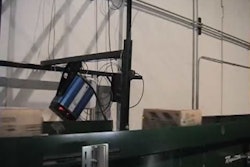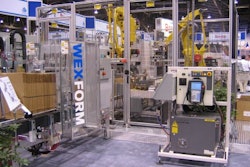Now, I’m not going to undermine my own credibility by indicating that a majority of manufacturers have discarded their companies’ concerns about packaging costs. In fact, if anything, there’s more attention being paid to costs then ever before. And there’s little chance that those companies that make and market commodity packaging materials will see pressure relieved near term.
Converters are struggling to keep up with rising costs in most materials, and the packaging buyers have become accustomed to cost increases. The upward pricing pressure, caused in large part because of unprecedented worldwide demand, has been with us for a couple of years, depending on the material, of course. But I’m not suggesting that companies have become so accustomed to increased costs that they’ve become complacent about it.
Just as consumers have reluctantly watched pump prices for gasoline go mostly up, but occasionally down and sideways, so too have companies developed a bit of a “we’re all facing the same increases” attitude about these costs. The good news, I think, is that the market climate has recreated a sense of innovation. A recent issue of BusinessWeek used an image of a folding carton blank on its cover for its special story on new examples of corporate creativity, citing among others 3M, Procter & Gamble, and General Electric. Although most of the examples didn’t relate to packaging, Target’s new prescription drug container with its easy-to-read label and color coding was an example most of us could understand (see page 110).
Just as the folding carton image on the cover was chosen for its relationship to the “out-of-the-box” thinking that is needed for innovation, we’ve been seeing some of those creative approaches in packaging far beyond Target’s bottle.
For example, a recent announcement by Outlook Group and Aviso Packaging may usher in some significant improvements in cheese packaging. Essentially, the joint development means that vacuum packaging equipment for block cheese overwrapping can now use an entirely new range of packaging films.
A significant percentage of cheesemakers employ the use of a film overwrapper (also known as a flow-wrapper or horizontal form/fill/seal machine) to vacuum package everything from blocks, chunks, slices, or even half-moons of natural cheese, as I’m told by longtime packaging communicator Tom Grey, on behalf of Outlook Group. Many of these machines, Grey says, do not permit the use of coextruded film substrates because the cutting devices supplied with the equipment are not effective or efficient in cutting coex films.
However, thanks to an invention by an engineer at a meat packaging company, the rights to an add-on machine device is now available that allows the equipment to cut coex films efficiently and productively, without other changes. So, now Outlook and Aviso offer cheesemakers the option to equip their machines with the new device—provided they source converted film from Outlook.
The key, says Grey, is that Outlook can ship more cost-effective coex films to cheesemakers that will permit those companies to reduce film costs and extend their products’ shelf life. In part, that’s because the converter employs ethylene vinyl alcohol (EVOH) as the barrier layer in its seven-layer coex web. And Grey says the converter has tested the patented device and film with a cheesemaker over more than a year.
(Disclaimer: For those of us who call Wisconsin home, anything that permits improvements in cheese packaging is welcome. And, just for the record, the state of California may produce more cheese than Wisconsin, but this Wisconsinite hasn’t seen any of our Wisconsin cows heading off to California, even for a vacation!)
This development may not equal RFID or nanotechnology as innovation. But for companies wary of major capital investment, it could be the kind of innovation that enables them to continue to use existing equipment while offsetting the rising costs in packaging materials.
See an archive of Arnie Orloski's Pipeline columns at www.packworld.com/pipeline.
Arnie can be reached at [email protected]

























